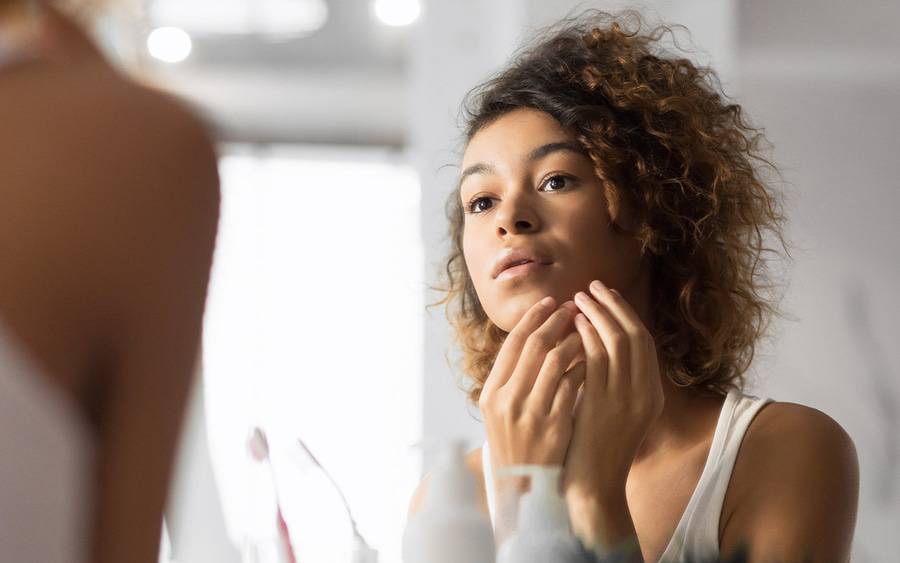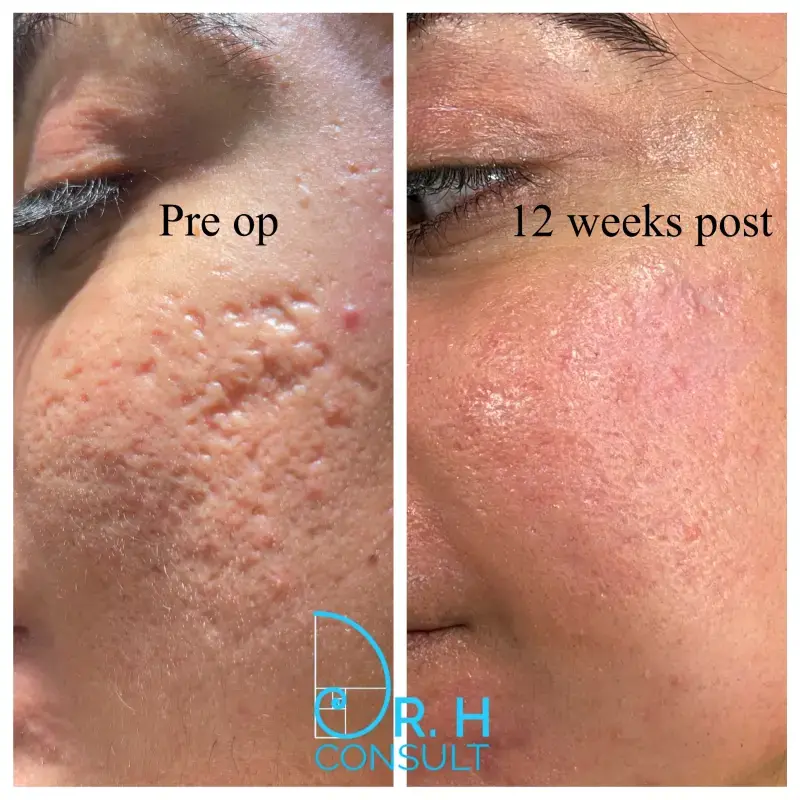Understanding the Various Skin Problems and Effective Therapy Alternatives for Acne Marks
Acne scars stand for an intricate interplay of skin problem that significantly impact individuals' self-confidence and general skin health. Comprehending the distinct kinds of acne marks-- atrophic and hypertrophic-- together with their underlying reasons, is essential for establishing efficient treatment methods. Various restorative choices exist, varying from sophisticated skin-related treatments to all-natural treatments. Nevertheless, the efficacy of these treatments often depends upon tailored analyses by qualified specialists. As we explore the landscape of acne scar administration, it ends up being obvious that the journey toward clearer skin may include greater than just topical services.
Kinds Of Acne Scars

On the other hand, hypertrophic scars arise from an overflow of collagen during the recovery procedure, bring about raised locations on the skin. These marks are commonly firm and can vary in shade, sometimes appearing red or darker than the bordering skin.
Understanding these sorts of acne marks is crucial for establishing a reliable therapy plan - acne scars treatment. Alternatives may include chemical peels, laser treatment, microneedling, or facial fillers, customized to the particular scar kind. A detailed assessment with a skin specialist can aid identify one of the most ideal treatment, thinking about the individual's skin type, scar intensity, and total skin wellness
Root Causes Of Acne Scarring
Marking occurs as a result of the body's natural healing response to inflammation and injury triggered by acne lesions. When acne types, it activates an inflammatory action, bring about the launch of numerous cytokines and development aspects that advertise healing. Nevertheless, this process can sometimes lead to too much tissue formation or inadequate repair, resulting in marks.
The primary reasons of acne scarring consist of the intensity of the acne itself, duration of the lesions, and individual skin kinds. Serious inflammatory acne, such as cysts and nodules, is most likely to cause scarring because of deeper tissue damage. In addition, inappropriate handling of acne lesions, such as pressing or choosing, can exacerbate cells injury and swelling, enhancing the likelihood of scarring.
Genetic proneness likewise plays a considerable role; people with a household history of scarring go to a higher risk. Skin type and shade can influence scar development, as darker skin tones may experience post-inflammatory hyperpigmentation, while lighter skin might create atrophic scars.
Ultimately, recognizing these causes is important in taking care of acne and reducing the possibility for scarring.

Therapy Options for Scarring
Reliable therapy options for acne scarring differ depending upon the type and seriousness of the scars. Usually categorized into atrophic, hypertrophic, and keloid scars, these conditions call for tailored approaches for optimum results.
For atrophic scars, which are identified by a loss of tissue, therapies such as chemical peels, microdermabrasion, and laser therapy are commonly used. These methods advertise skin renewal and boost collagen production, thereby enhancing skin texture. Subcision, a minimally intrusive procedure, can likewise work by separating fibrous bands under the skin.
Hypertrophic and keloid marks can be much more testing to treat. Alternatives include corticosteroid injections to minimize inflammation and flatten the marks. In many cases, cryotherapy or laser therapy may be suggested to minimize their appearance.
Surgical alternatives are available for extreme scarring, where excision or skin grafting may be required. It's essential for people to speak with a dermatologist to analyze their specific mark kind and discuss one of the most ideal treatment strategy. Integrating multiple therapies commonly yields the most effective end results, ensuring that each individual's one-of-a-kind skin condition is attended to effectively.
Natural Home Remedy and Natural Solutions
All-natural remedies and natural remedy can offer an obtainable approach for individuals seeking to enhance the look of acne marks (skin rejuvenation treatments). Various ingredients discovered in the home kitchen area have actually shown possible advantages in boosting skin texture and promoting healing

Another reliable choice is lemon juice, which works as an all-natural exfoliant and can lighten hyperpigmentation. It must be used meticulously, as it may create photosensitivity. Oatmeal masks are additionally useful; their gentle exfoliation can aid eliminate dead skin cells while soothing inflammation.
Essential oils, such as tea tree oil and lavender oil, can better support mark healing because of their antimicrobial residential or commercial properties. It is critical to carry out a spot test prior to applying any kind of remedy to make sure there are no adverse responses. These natural services can be a corresponding method in the trip to diminish acne scars.
Stopping Future Scarring
Adopting a positive method to skincare can substantially minimize the threat of creating future acne marks. Routine cleaning, exfoliation, and hydration can assist preserve skin health and wellness and avoid blocked pores.
Furthermore, avoiding the temptation to press or select acne sores is vital, as this can cause inflammation and succeeding scarring. Rather, people ought to concentrate on applying topical therapies that advertise healing and decrease inflammation. Ingredients such as salicylic acid, benzoyl peroxide, and retinoids are recognized for their efficiency in handling acne and reducing scars.
Sunlight security is another vital component; direct exposure to UV rays can restrain and dim scars healing. Consequently, making use of a broad-spectrum sunscreen daily can reduce these effects - acne scars.
Last but not least, preserving a healthy diet regimen rich in antioxidants and remaining hydrated assistances skin regrowth. By executing these preventive measures, people can considerably decrease their danger of future scarring and promote total skin health.
Verdict
In final thought, a thorough understanding of acne marks, encompassing both atrophic and hypertrophic types, is necessary for reliable therapy approaches. Consultation with a dermatologist stays crucial to devise personalized approaches that consider individual skin types and scar severity, ultimately enhancing the efficacy of mark monitoring strategies.
Acne marks stand for a complicated interplay of skin conditions that considerably effect people' self-worth and total skin wellness. The 2 main groups of acne marks are atrophic and hypertrophic scars. These scars Look At This are further classified into three subtypes: ice choice marks, which are deep and slim; boxcar marks, which are larger and have well-defined edges; and rolling check scars, which create a wave-like appearance due to uneven skin texture.
A complete appointment with a skin doctor can aid establish the most ideal treatment, taking right into account the individual's skin type, scar extent, and total skin health and wellness.
Assessment with a skin doctor stays crucial to create personalized strategies that take into consideration private skin kinds and mark seriousness, inevitably improving the efficacy of mark administration methods.